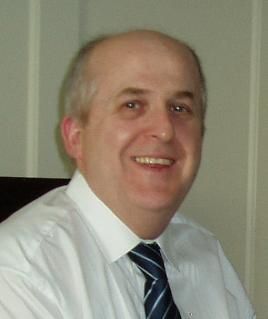
Flowers are beautiful; sunsets are beautiful – but the Perron-Frobenius theory of non-negative matrices?
Oh yes, enthuses Professor Peter Butkovic; beautiful – particularly when animated and set to music by Bach.
‘The Perron-Frobenius theory is one of the most elegant theories in mathematics,’ he explains. ‘It’s beautiful by its structure and the efficiency with which it provides answers to questions.’
One of the problems it helped to solve – 86 years after being proved by Oskar Perron and Georg Frobenius in 1912 – turned Google into the most successful, and profitable, search engine in the world.
‘Brin and Page, the authors of Google, devised a mathematical model of internet search, called PageRank, which enabled Google to determine a website’s relevance by the number of web pages, and the importance of those pages, that linked back to the original site, rather than by the number of those pages alone. For a practical use of this model, it was crucial to use the existing Perron-Frobenius theory.
‘This was 1998, when search engines such as Yahoo already existed; but the inventors of Google used linear algebra to eliminate problems such as people over-valuing their web pages and rank websites in a different way. By doing so, it simply beat all the other search engines. Google is now valued at almost $100 billion, which makes the Perron-Frobenius theory probably the most profitable application of mathematics ever.’
Peter, who delivered his EPS Inaugural Lecture ...And Beautiful is Useful... in September, hopes it won’t take 86 years for his research using the same linear algebraic theory to find a remarkable real-life application.
‘In any case, I feel I’m fortunate in a sense that a particular result of my research happens to be related to the Perron-Frobenius theory, although in a completely different set of circumstances to the inventors of Google.’
Peter’s main area of research is max-linear systems, also known as max-algebra or tropical algebra, where the operation of addition is replaced by that of maximum. Applications of tropical mathematics can be found in areas as diverse as programs verification, phylogenetics, cellular protein production and railway scheduling.
Peter is using it to look at solving the problems of stability of multi-processor interactive systems, where processors can be anything from a machine or an individual worker to a huge factory. If applied to an airport, for instance, it might have prevented the teething problems caused by a lack of synchronisation that beset the opening of Heathrow’s Terminal 5 in 2008, which resulted in some 42,000 bags failing to travel with their owners and more than 500 flights being cancelled.
‘My motivation for the lecture was to show that what mathematicians do today might not immediately be used, but may be used in the future.’
Peter knows a lot about waiting for the right time: he grew up in Communist Czechoslovakia and his academic career only took off in earnest when the Wall came down in 1989 and he was able to take up a research fellowship at Birmingham two years later. He has been at the University ever since, and in 2012 was appointed Professor of Applied Discrete Mathematics.
He believes a love of mathematics is born rather than made: His maternal grandfather, Robert Michl was a German electrical engineer who invented the electric clock drive in the 1920s.
‘So maths was sleeping in me when I was born,’ says Peter, whose mother was German and father was Slovak. ‘I was very fortunate to have had fantastic mathematics teachers, particularly the one I had when I was 13 who ignited my passion for the subject. She gave me the right book to read because she recognised I could do things other students couldn’t. And I fell in love with mathematics.’
Peter did most of his studying in eastern Slovakia, but undertook his PhD in Prague.
‘Living in a totalitarian country was very difficult in many ways, but maths was encouraged. The resources, though, were quite different from now. Young researchers today can’t imagine those conditions. For example, if I wanted to read an international maths journal, I had to travel 600km to the library in Prague. If I wanted to make a photocopy of pages from that journal, I was immediately suspected of doing something wrong.’
In 1985, at a conference in Czechoslovakia, Peter met Professor Ray Cuninghame-Green from Birmingham’s School of Mathematics, and one of the first pioneers of max-algebra.
‘We discovered that, on either side of the Iron Curtain, we were doing similar things. It was a fantastic meeting and he invited me to Birmingham. When I managed to obtain travel permission, I left my family behind and came to the University for three months in 1988. When I was leaving to return home, I said to my colleagues in Birmingham that I would probably never see them again. Little did I know that the very next year the Berlin Wall would come down and I would return to Birmingham, this time with my family.
‘I have never considered going back. I enjoyed wonderful collaboration with Ray Cuninghame-Green, who retired in 1999 and, sadly, died in June 2013.
‘Now, in these twilight years, I am particularly excited to see enthusiastic young people. It’s a huge privilege for me to pass on my knowledge to them. I think enthusiasm is the biggest factor for success in mathematics. It’s something that’s probably in the DNA: you can try to ignite an interest, but it must be there already.’
After 35 years in academia, Peter’s own passion burns as fiercely as ever.
‘After all these years, I believe mathematics is worth doing. Only medicine is a greater thing to study in terms of helping people. We may not see the results of people’s work straightaway, but in many cases – including mine – there is the potential for great application. And, in the meantime, it is beautiful.’
Peter’s Inaugural Lecture can be found here.